From a first-generation Celica 1600GT to today’s highly accomplished Corolla hatch, we take a whistle-stop tour through highlights of more than four decades of Toyota BTCC history.
1975 BTCC: Enter the Samurai
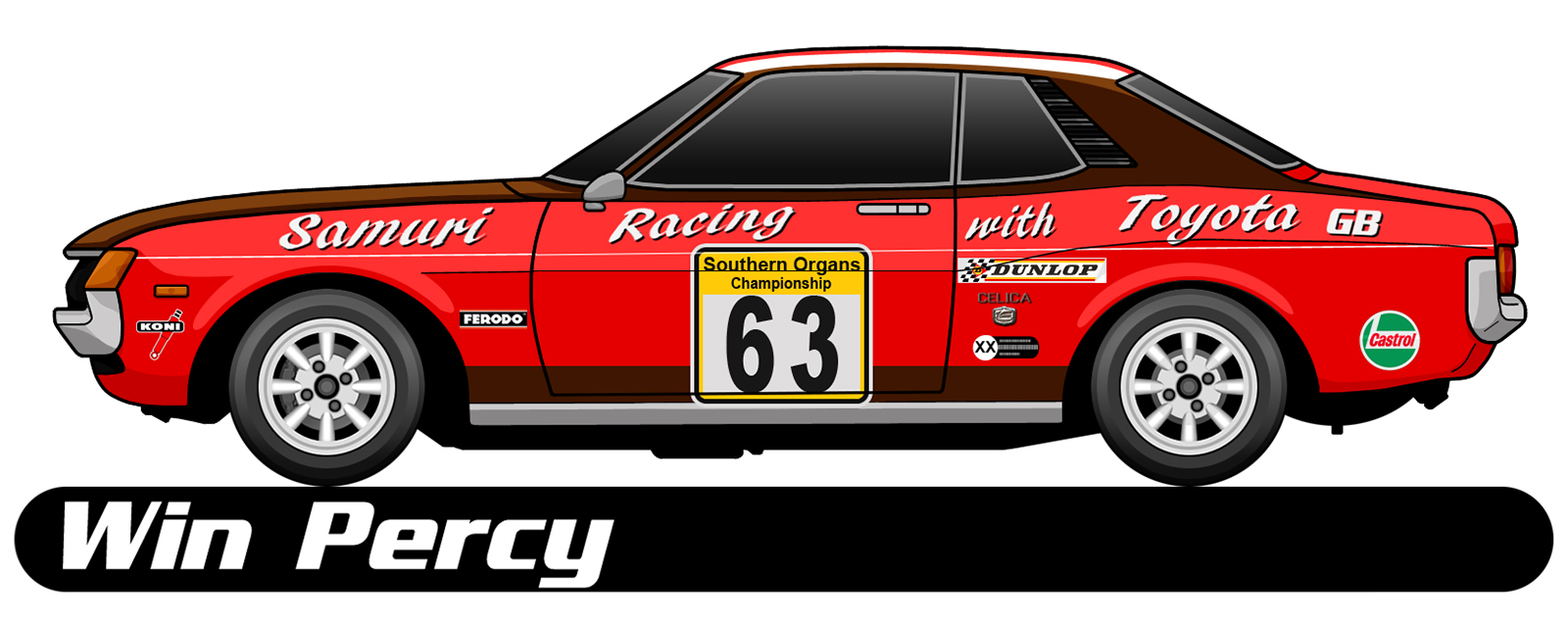 The groundwork for Toyota’s participation in the BTCC was laid during the 1974 season when Liverpudlian racer and engineer John Markey campaigned a first-generation Celica GT under the Dealer Team Toyota banner. Entering his near-standard machine in the class for cars with engines under 1.6 litres, Markey claimed a class victory in the final round at Brands Hatch.
The groundwork for Toyota’s participation in the BTCC was laid during the 1974 season when Liverpudlian racer and engineer John Markey campaigned a first-generation Celica GT under the Dealer Team Toyota banner. Entering his near-standard machine in the class for cars with engines under 1.6 litres, Markey claimed a class victory in the final round at Brands Hatch.
In 1975, prominent Bedford-based tuning company Samurai Racing took over the running of the car, while Win Percy, then 31, was hired to drive. With more power, overhauled suspension and a number plate confidently proclaiming ‘WIN 1’, the 1,588cc Celica GT won its class nine times. Percy ended the season tied on overall points with eventual champion Andy Rouse but lost out by dint of fewer class wins. He was second overall in 1976, too, with nine more class wins.
1982: Percy’s clean sweep
 The histories of Win Percy and Toyota in the BTCC are inextricably linked, and the west countryman’s third stint with the manufacturer was also the most successful. At the helm of a new Corolla GT, Percy racked up a clean sweep of class victories – 11 out of 11 – and gave Toyota its first overall BTCC title. Percy’s four-cylinder car was also a regular fixture in the overall top ten, despite not having as big an engine as other machines.
The histories of Win Percy and Toyota in the BTCC are inextricably linked, and the west countryman’s third stint with the manufacturer was also the most successful. At the helm of a new Corolla GT, Percy racked up a clean sweep of class victories – 11 out of 11 – and gave Toyota its first overall BTCC title. Percy’s four-cylinder car was also a regular fixture in the overall top ten, despite not having as big an engine as other machines.
1985 BTCC: Sheene’s machine
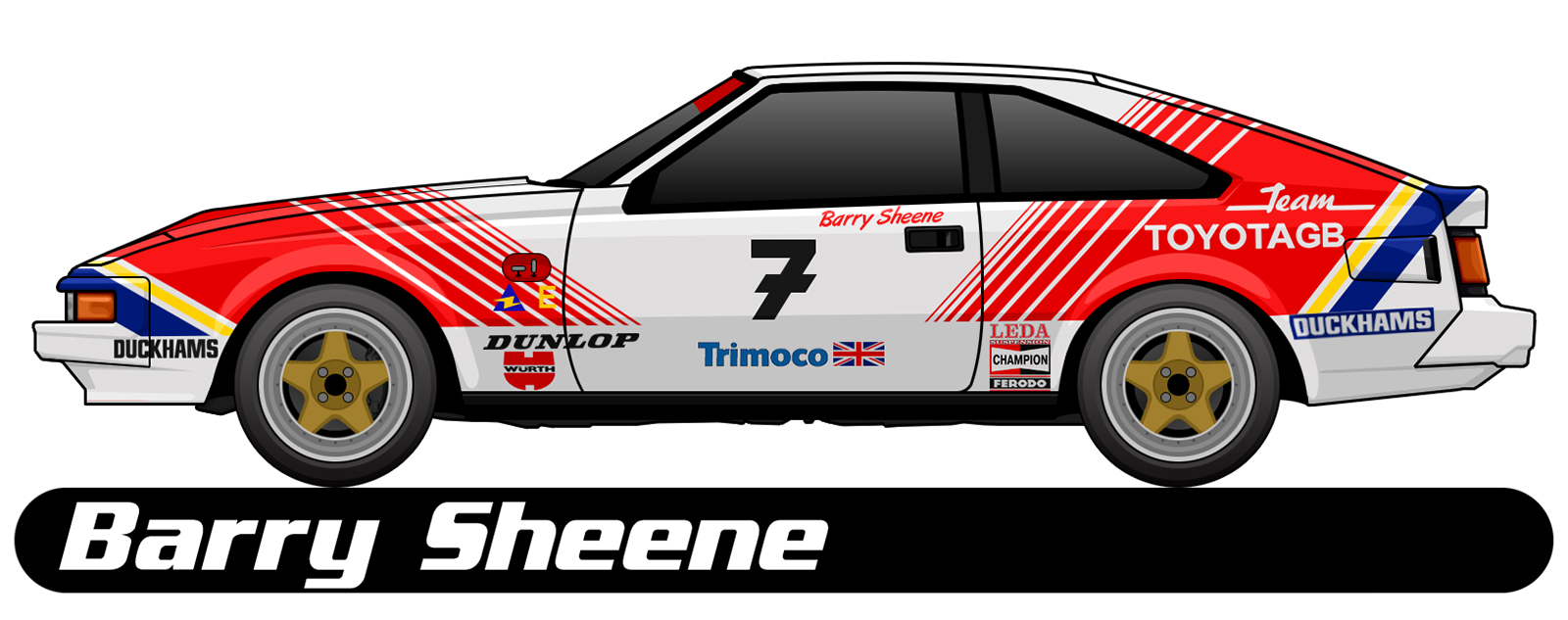 A change of regulations for 1983 prompted a change of car, with Toyota GB stepping up to the BTCC’s main class with a 2.8-litre straight-six Celica Supra. Percy scored this car’s only outright BTCC win at Brands Hatch in 1984 but the arrival of motorcycle racing legend Barry Sheene as his replacement in 1985 grabbed the attention of the daily papers. It was more than just a publicity stunt: Sheene, who was making a full-time switch from two wheels to four, took two podiums in the 200bhp Celica Supra and ended the year sixth in the Class A points standings.
A change of regulations for 1983 prompted a change of car, with Toyota GB stepping up to the BTCC’s main class with a 2.8-litre straight-six Celica Supra. Percy scored this car’s only outright BTCC win at Brands Hatch in 1984 but the arrival of motorcycle racing legend Barry Sheene as his replacement in 1985 grabbed the attention of the daily papers. It was more than just a publicity stunt: Sheene, who was making a full-time switch from two wheels to four, took two podiums in the 200bhp Celica Supra and ended the year sixth in the Class A points standings.
Toyota BTCC History – 1986/87: Hodgetts goes back-to-back
 For 1986, Toyota GB returned to the class for 1,301-1,600cc engine capacities, entering an AE86 Corolla GT Coupe and contracting Chris Hodgetts to drive. It was a hugely successful combination; Hodgetts became a crowd favourite with his attacking driving in the 180bhp car. Over two seasons he and Toyota GB claimed 18 class wins from 20 starts and secured back-to-back overall BTCC titles.
For 1986, Toyota GB returned to the class for 1,301-1,600cc engine capacities, entering an AE86 Corolla GT Coupe and contracting Chris Hodgetts to drive. It was a hugely successful combination; Hodgetts became a crowd favourite with his attacking driving in the 180bhp car. Over two seasons he and Toyota GB claimed 18 class wins from 20 starts and secured back-to-back overall BTCC titles.
1988: Corollas everywhere
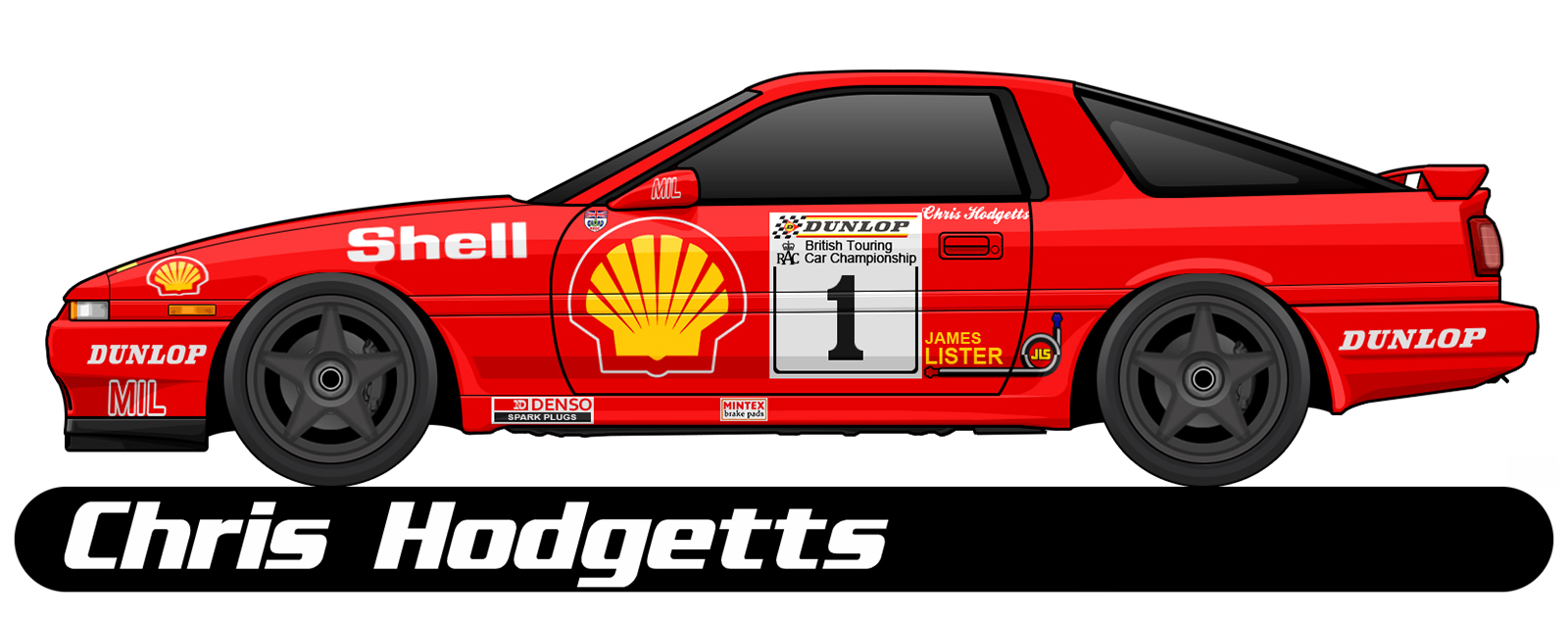 At the tail-end of the decade, the rear-wheel drive AE86 Corolla continued to be a fixture on the BTCC grid, even though it had effectively been replaced by the newer, front-wheel drive Corolla GT hatch that was also competing. Indeed, Phil Dowsett, driving a TOM’S GB-entered Corolla, finished second overall in the 1988 championship and won Class D ahead of Tony Crudgington, who was in a privately entered AE86. Dowsett added a second Class D title in 1989, making him and Toyota the last winners of the BTCC’s ‘small class’ before it was phased out.
At the tail-end of the decade, the rear-wheel drive AE86 Corolla continued to be a fixture on the BTCC grid, even though it had effectively been replaced by the newer, front-wheel drive Corolla GT hatch that was also competing. Indeed, Phil Dowsett, driving a TOM’S GB-entered Corolla, finished second overall in the 1988 championship and won Class D ahead of Tony Crudgington, who was in a privately entered AE86. Dowsett added a second Class D title in 1989, making him and Toyota the last winners of the BTCC’s ‘small class’ before it was phased out.
1991: Enter the Super Tourers
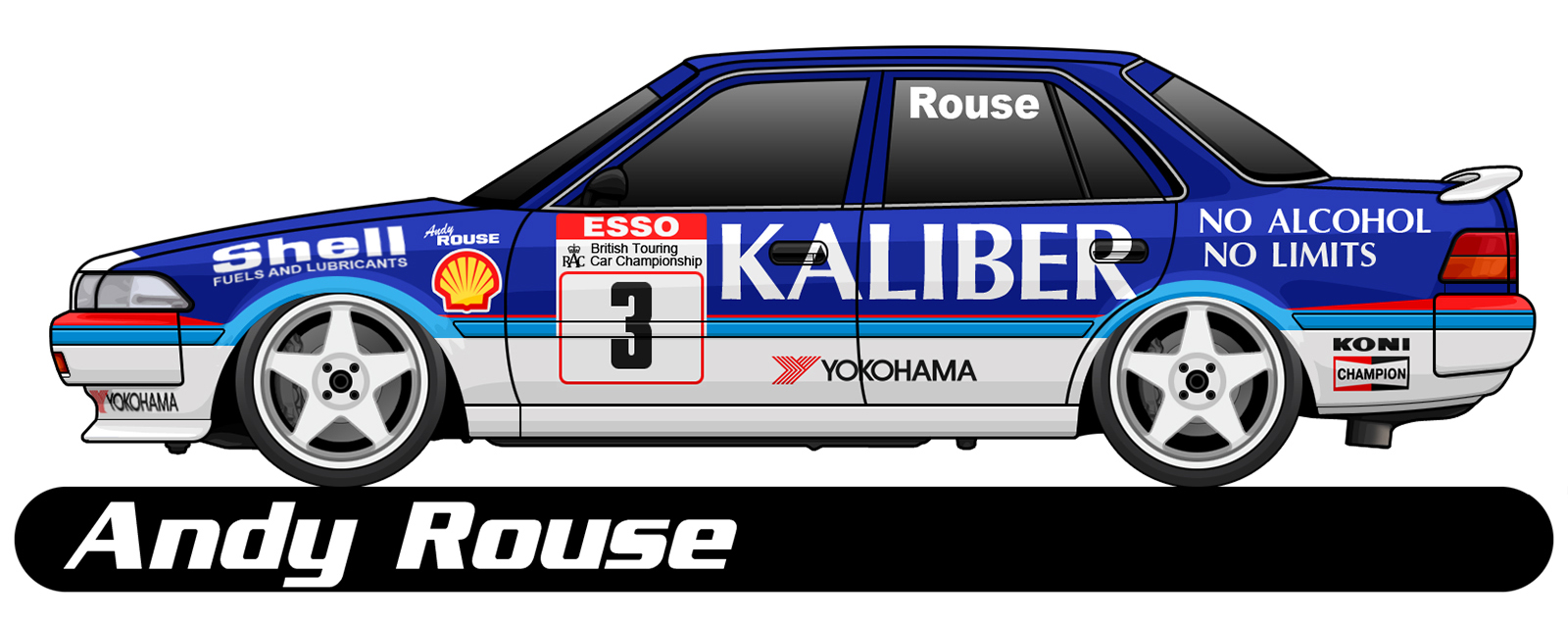 With the BTCC switching to a single-class formula for 2.0-litre cars, Toyota was back in force with a brace of front-wheel drive Carina models run under the Kaliber ICS Team Toyota banner. Multiple BTCC champion Andy Rouse took three wins, and Rouse and Toyota ended the season third in both the drivers’ and manufacturers’ standings.
With the BTCC switching to a single-class formula for 2.0-litre cars, Toyota was back in force with a brace of front-wheel drive Carina models run under the Kaliber ICS Team Toyota banner. Multiple BTCC champion Andy Rouse took three wins, and Rouse and Toyota ended the season third in both the drivers’ and manufacturers’ standings.
For 1992, Rouse was joined in the team by reigning champion Will Hoy. Toyota enjoyed one of its strongest seasons ever, regularly challenging for pole positions, podiums and race wins, with a resounding one-two at Oulton Park in May one of the highlights. Hoy finished second in the points, Rouse was fifth, and it was joint-second for Toyota in the manufacturers’ standings.
1993 BTCC – “The car upside down is a Toyota!”
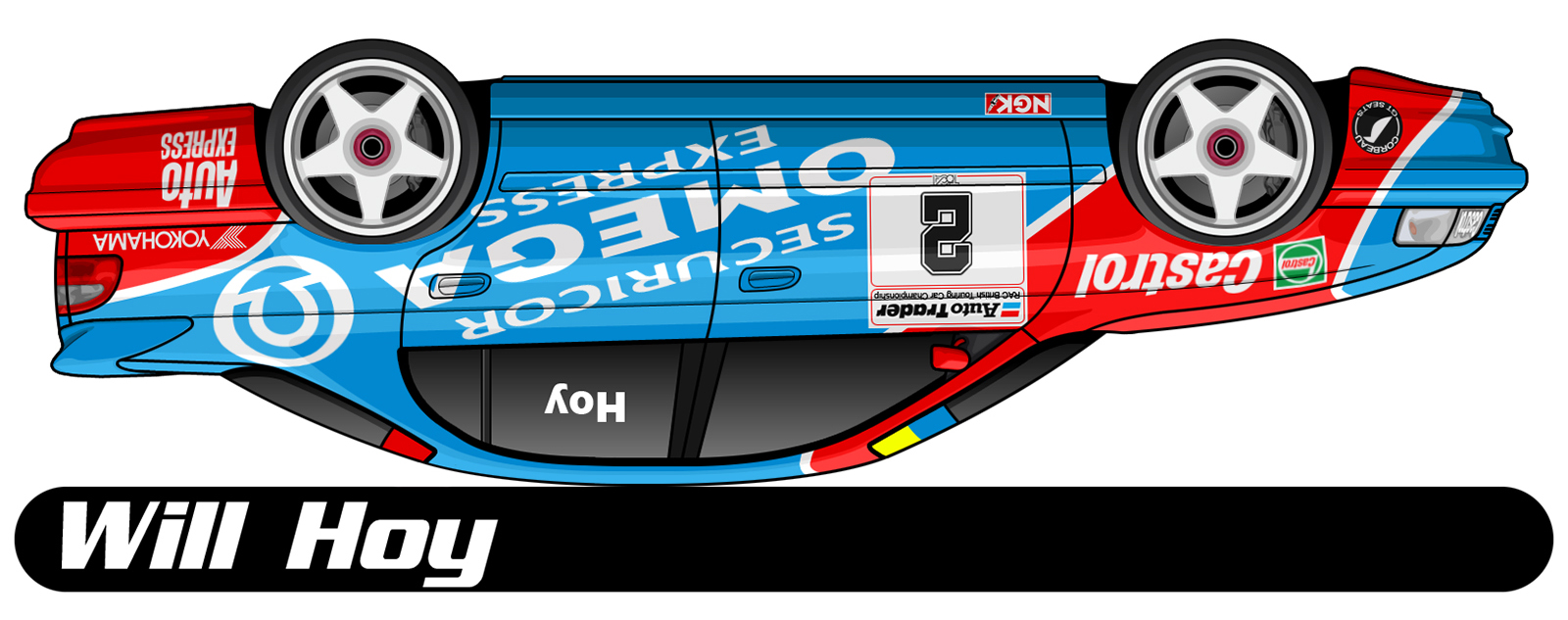 Renowned Toyota tuning company TOM’S GB took over the running of the Carina Es as Toyota expanded to its most ambitious BTCC assault yet. Hoy remained with the main team, joined by former Formula 1 racer Julian Bailey. Hoy and Bailey were regular qualifiers in the top five and often closely matched eachother on race pace – perhaps sometimes a little too closely matched, as the famous crash right in front of the television cameras in the British Grand Prix support race at Silverstone attested! Hoy, leading the race at the time, ended upside down in the gravel trap after Bailey smashed into him, creating one of the most memorable moments of 1990s BTCC history. The season yielded a single win for Bailey at Knockhill. He ended up fifth in the points, with Hoy seventh and Toyota third in the manufacturers’ standings.
Renowned Toyota tuning company TOM’S GB took over the running of the Carina Es as Toyota expanded to its most ambitious BTCC assault yet. Hoy remained with the main team, joined by former Formula 1 racer Julian Bailey. Hoy and Bailey were regular qualifiers in the top five and often closely matched eachother on race pace – perhaps sometimes a little too closely matched, as the famous crash right in front of the television cameras in the British Grand Prix support race at Silverstone attested! Hoy, leading the race at the time, ended upside down in the gravel trap after Bailey smashed into him, creating one of the most memorable moments of 1990s BTCC history. The season yielded a single win for Bailey at Knockhill. He ended up fifth in the points, with Hoy seventh and Toyota third in the manufacturers’ standings.
2011: Back where it belongs
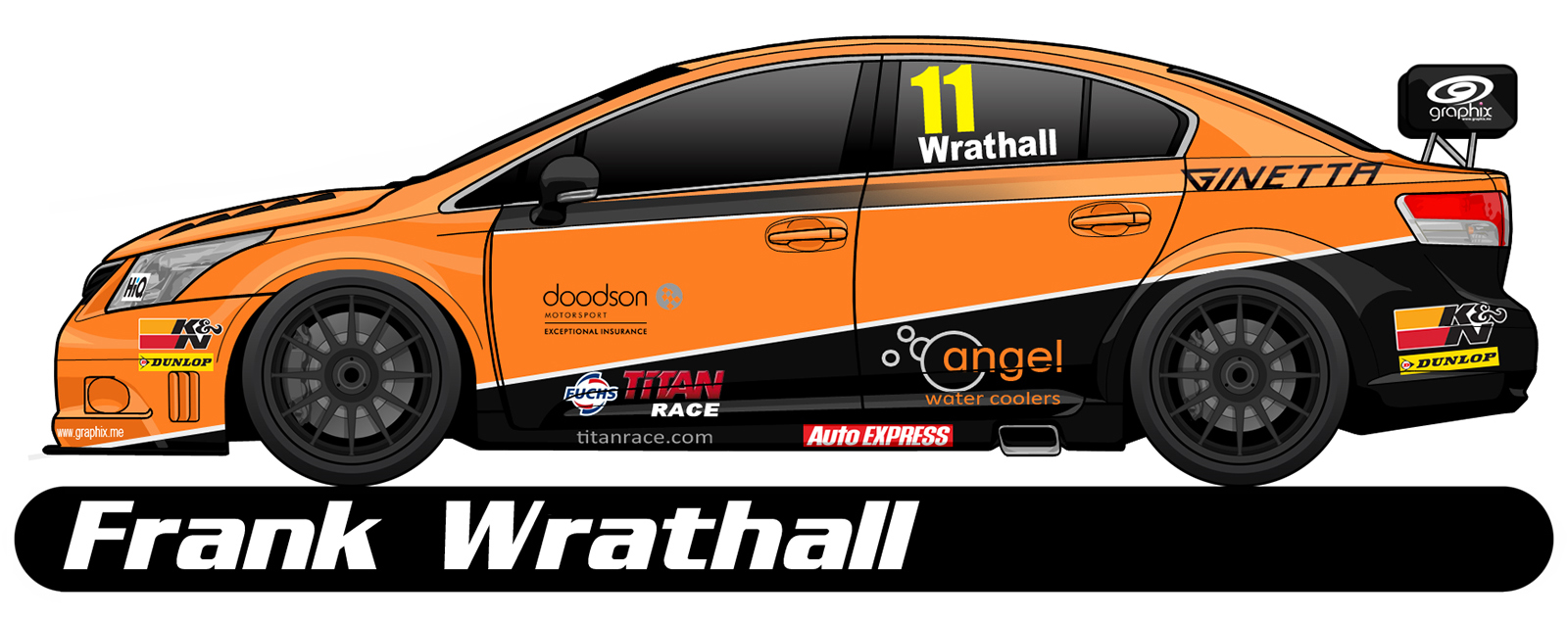 After an absence of almost a decade-and-a-half, Toyota returned to the BTCC in tandem with the championship’s switch to the Next Generation Touring Car (NGTC) rules. Fittingly, the Avensis – spiritual successor to the Carina E raced in the BTCC in the mid-1990s, and based on the road car built by Toyota Manufacturing UK at Burnaston, Derbyshire – was adopted by the BTCC to showcase the new regulations. Two cars appeared on the grid and, in 2012, Dynojet Race Team’s Frank Wrathall scooped the first BTCC win for the Avensis NGTC at Brands Hatch. It was the first win for Toyota after 19 seasons.
After an absence of almost a decade-and-a-half, Toyota returned to the BTCC in tandem with the championship’s switch to the Next Generation Touring Car (NGTC) rules. Fittingly, the Avensis – spiritual successor to the Carina E raced in the BTCC in the mid-1990s, and based on the road car built by Toyota Manufacturing UK at Burnaston, Derbyshire – was adopted by the BTCC to showcase the new regulations. Two cars appeared on the grid and, in 2012, Dynojet Race Team’s Frank Wrathall scooped the first BTCC win for the Avensis NGTC at Brands Hatch. It was the first win for Toyota after 19 seasons.
2014: A new star is born
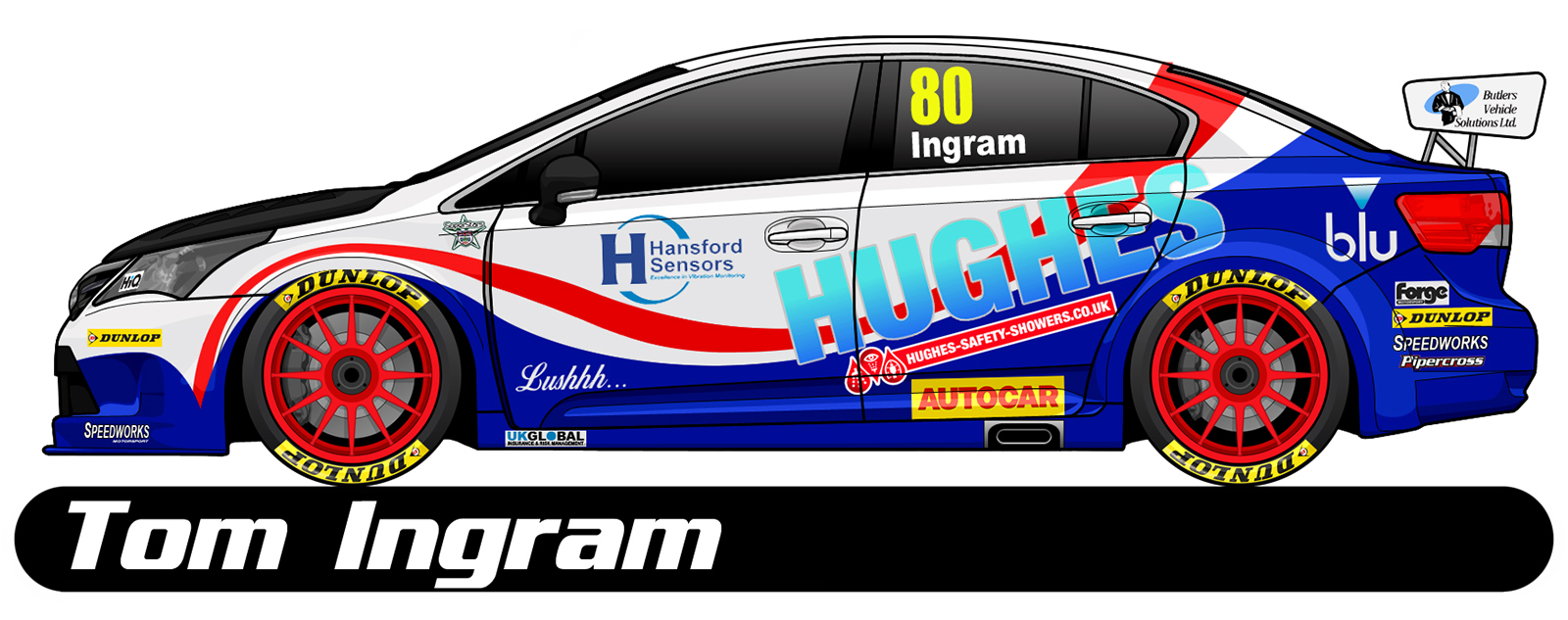 Having impressed in the various formulae within the BTCC’s support package, young gun Tom Ingram signed for independent team Speedworks Motorsport to race the Avensis in 2014 and didn’t take long to make an impact.
Having impressed in the various formulae within the BTCC’s support package, young gun Tom Ingram signed for independent team Speedworks Motorsport to race the Avensis in 2014 and didn’t take long to make an impact.
The following year he claimed two podiums and finished the season 13th overall, which evidently boosted Tom’s confidence and abilities. He started 2016 in stunning fashion, qualifying on pole position and storming to his debut victory at Brands Hatch. This was followed by a further win at Silverstone later that season.
Toyota BTCC History – 2017: Independents’ champion
The 2017 season saw the introduction of a newly facelifted Avensis. And its outstanding pace was confirmed with Ingram securing enough multiple victories and podium finishes to enter the final weekend as odds-on favourite to win the independents’ title. By the end of race three at the Brands Hatch finale, Ingram had not only secured the independents’ trophy for Speedworks Motorsport – the first since Lee Brookes won in 1996 in his Carina E – but leapfrogged into third place in the overall championship.
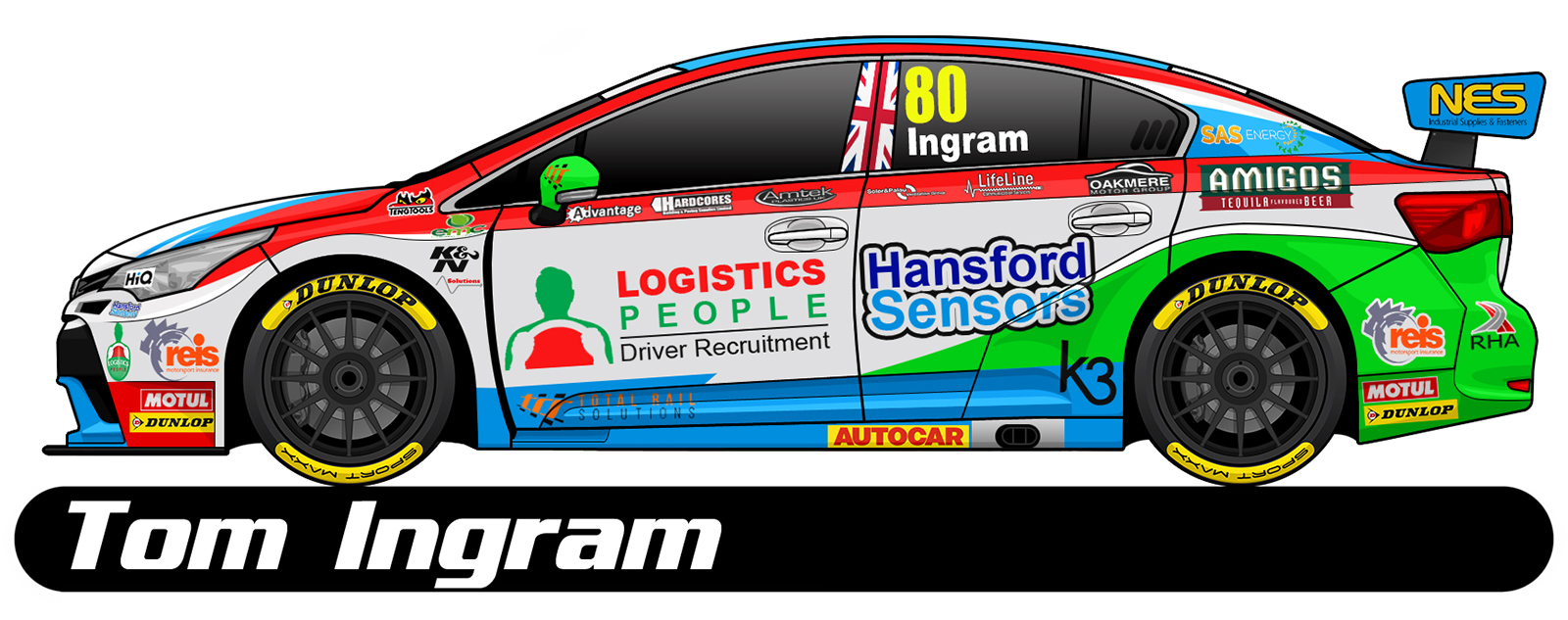
Speedworks and Ingram edged closer to the top the following year with three victories, nine podium finishes, five fastest lap times and 171 crowd-pleasing overtaking moves. It was more than enough for Speedworks to defend its independents’ title, though Ingram himself finished the hard-fought season a highly creditable runner-up in the drivers’ championship.
2019: Official backing
The bond between Speedworks and Toyota was cemented in 2019 when the Cheshire-based team acquired official backing to become Team Toyota GB. This also meant the outfit transitioned from the ranks of being an independent to a manufacturer entry. The launch of the new team also coincided with the arrival of the all-new Toyota Corolla race car, re-igniting a BTCC heritage that was so successful back in the Eighties. Ingram hit the ground running with four victories during the season.
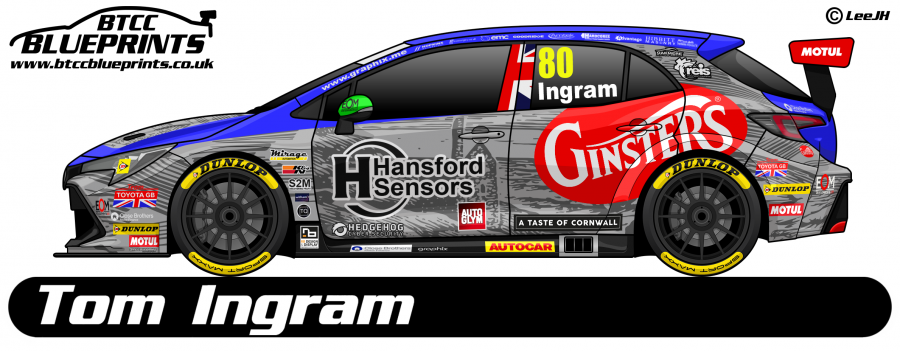
2020: Global alignment
While the Team Toyota GB name provided a memorable link to BTCC history, 2020 saw the BTCC team align itself more closely with Toyota’s international race and rallying activities. Now competing under the Toyota Gazoo Racing UK banner, the team continued to stamp its authority on the series, culminating in a total of seven race wins, 15 podiums, two pole positions and five fastest laps in the potent new Corolla over the past two years.
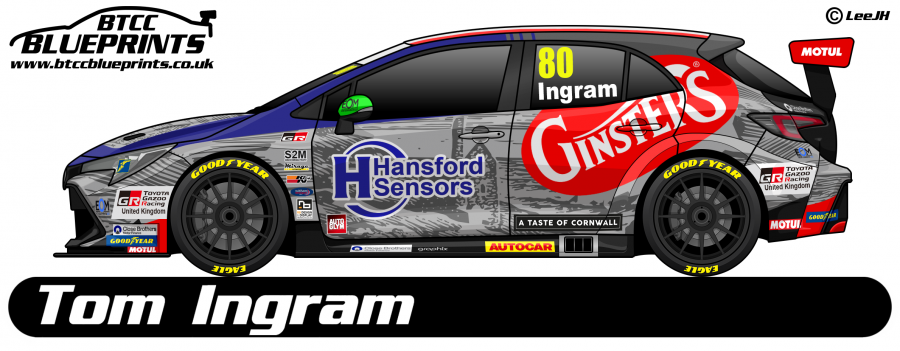
Toyota BTCC history – 2021: Expanding the team
Following the acquisition of a second licence, Toyota Gazoo Racing continued its assault on the BTCC with an expanded two-car line-up, with each of the Corollas wearing the brand’s distinctive white, red and black livery. This new chapter for the team was further underlined with the signing of two highly experienced new drivers: Rory Butcher and Sam Smelt.
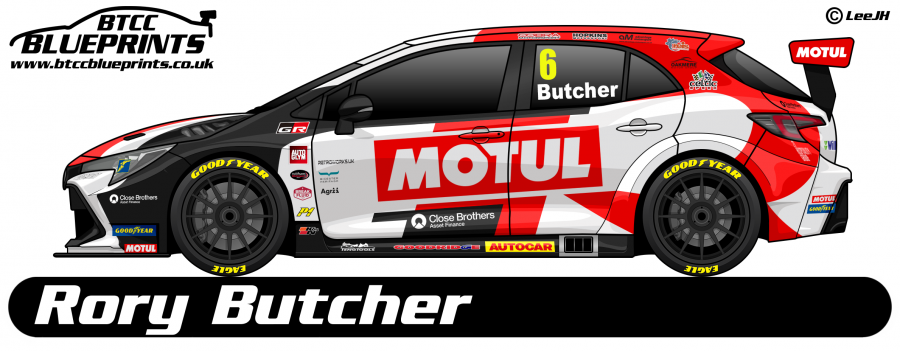
Our thanks to the wonderful BTCC Blueprints for the illustrations.
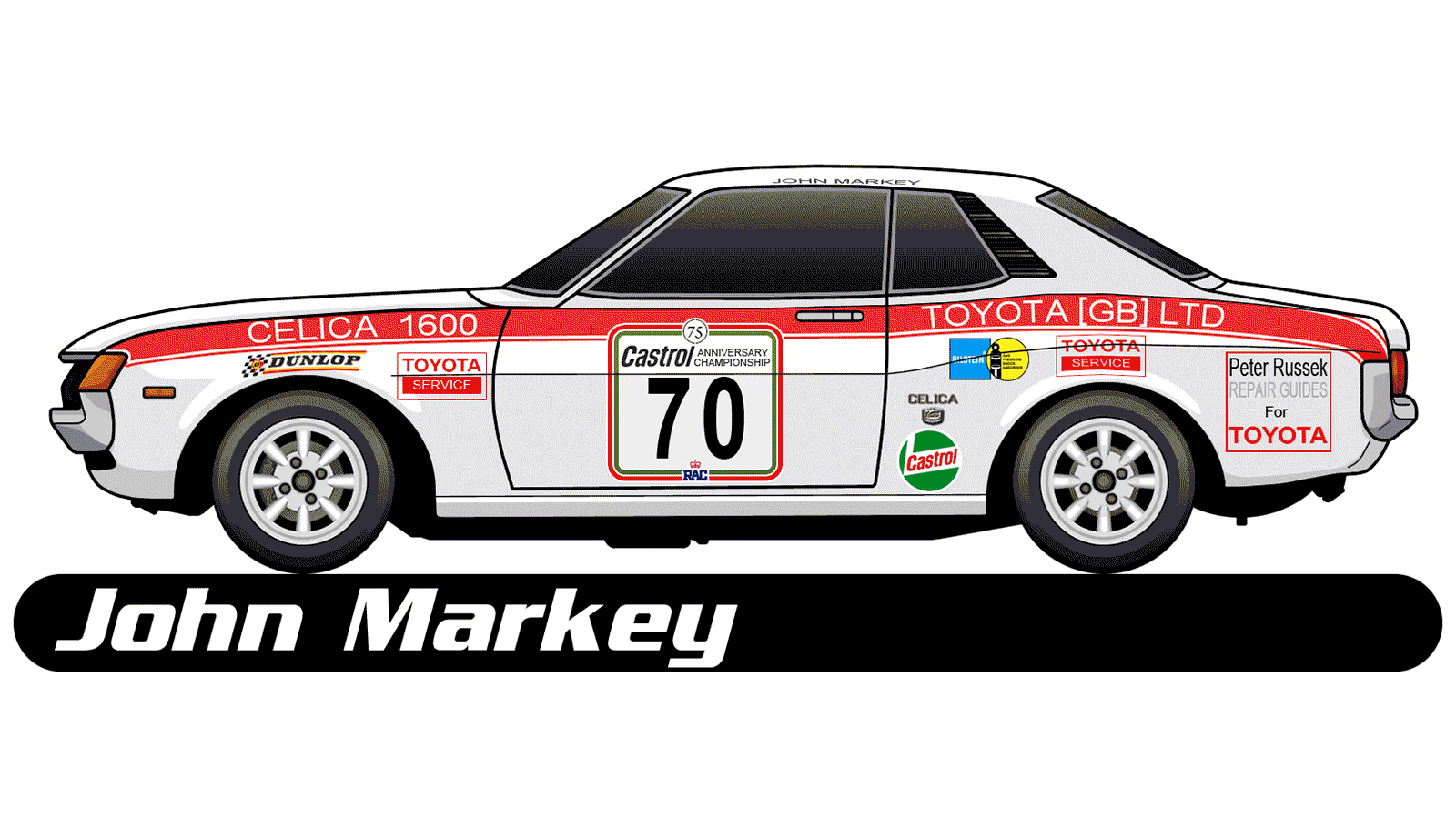


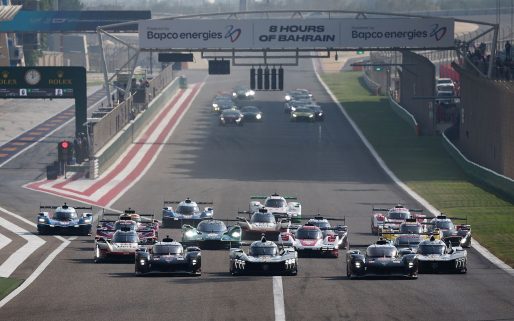
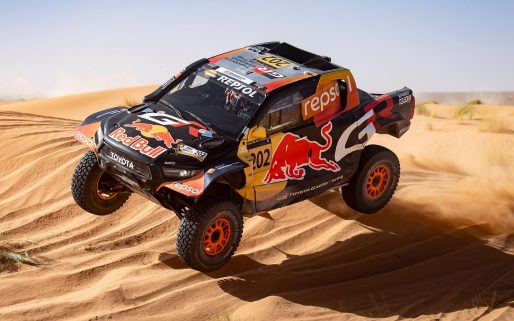
I’d like to know more about the Carina E and its performance in the BTCC. Can you help me learn more about its track record? Thank you!
Hi MK Santos,
Thanks for getting in touch.
You can find more information on the BTCC website, here: https://www.btcc.net/history/in-depth/1991-2000/.
Thanks.
Massive BTCC fan and loved the Ginsters livery. Inspired me to buy a GR Corolla!
Will you be bringing out a high performance Corolla at some point? That would be amazing
Hi Dan,
Thanks for your comment and congratulations on your new Corolla!
Currently, we do not have any information on this.
Please keep an eye on our blog and social media channels for the latest information on our vehicle offerings.
Thanks.
I did the traditional signwriting on the Barry Sheenes Toyota for Hughes of Beaconsfield ,They called me to come back ,as Barry was there for a photo shoot, and he refused to sit in it ,until I had painted the stroke across the middle of the Seven ,,thats how superstitious he was..
I still have two models oh the car,,,,I think only 100 were manufactured
Happy days ,,,,
Hello, I was one of the mechanics that built John Markey’s Celica 1600GT. We towed it with a Mk1 Hiace Danbury motor caravan which was painted in similar Dealer team Toyota livery to the car. I have a model of the car but will soon have a model of the Hiace and am looking for any photos that may exist of this outfit. I took photos at the time but left the camera on a bus!
Regards, Lloyd
Hi Lloyd,
Unfortunately, we do not have any images available.
We wish you all the best in your search.
Thanks.
I was the signwriter who hand painted the graphics on the Corolla’s and later the Supras from 1987 to ’89 first for Chris Hodgetts Motorsport and later for Mineral Improvements Ltd. Chassis engineering was done by Dave Lampitt and his crew (Snipe)at Spec Fab, Mechanic at CHMS was Phil Bourne ,the engines were built by Jim Whitehouse of Arden Engineering. CHMS also ran a second Corolla (Candy Apple Red) for Alan Minshaw of Demon Tweaks . The MIL Shell Oil Supras and the CHMS Team Toyota GB Corollas were beautifully prepared and turned out, immaculate , I seem to remember being told that it was difficult to cool the racing Supras effectively due to the very high horsepower levels the big Turbo sixes were producing then .